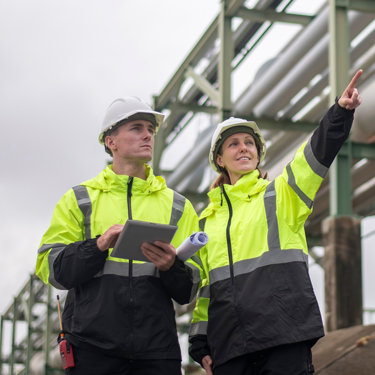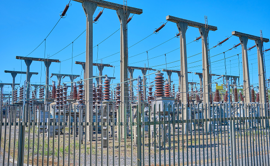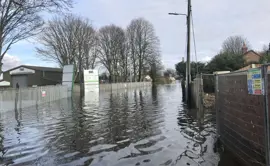Tackling 5 key environmental challenges facing UK airports
Published: 4 August 2025
Environmental issues affecting the aviation sector have climbed the agenda for UK airports, with pressure from regulators and communities to cut carbon, protect water, and preserve habitats. Rising passenger numbers and ageing assets also add strain on operations the environment. You need a clear view of the issues shaping your environmental activity.
The UK aviation sector drives growth and connects our cities. It handles over 280 million passengers a year and supports trade, tourism, and regional development. Airports range from major hubs like Heathrow to regional airfields, with each site managing fuel handling, ground operations, and building of new terminals.

Growth brings environmental strain. You deal with noise complaints, rising carbon targets, and tighter permits. Local water bodies face run-off from de-icer and hydrocarbon spills. Expansion plans stir debates on wildlife loss and land contamination. At the same time, you must align with national goals on net zero and sustainable fuel use.
Regulators now wield tougher rules on emissions, water quality, and biodiversity. You get formal notices under Regulation 61 demanding pollutant data. You must report on PFAS from de-icer and on hydrocarbons and other chemicals. Failure to meet these demands can lead to enforcement action and fines, so your response to these rules defines your licence to operate.
Community groups and local councils push back on airport growth. Noise zones and flight paths become battlegrounds. You need open dialogue and solid data. Transparency on air quality and run-off testing helps you build trust. It also cuts the risk of costly legal battles or planning delays.
Your challenge is clear. You must balance growth ambitions with environmental duty. This means upgrading fuel infrastructure, improving drainage, cutting carbon, and safeguarding wildlife. You also need robust data and ongoing monitoring to prove your commitments.
The 5 most important environmental issues for UK airports and how you can address them
1. Regulation 61 compliance and emerging pollutant monitoring
Regulation 61 notices have been issued by the Environment Agency. They demand detailed data on your pollutant discharges. You must report on PFAS from de-icer, on oil, and on cleaning chemicals. The notice gives tight deadlines for surveys, screening plans, monitoring results, and risk assessments.
Meeting these requirements needs a clear plan. You start with site surveys to map drains and pollution sources. Then you set up a screening procedure and submit it for approval. Once approved, you carry out tests and report results. You follow with a 12-month monitoring programme and a surface water risk assessment.
Missing deadlines or filing false data can trigger legal action. Acting fast and working with specialists makes this task manageable. You build a data-driven record that satisfies regulators. That record also shows your team is taking pollutant risks seriously.
2. Carbon emissions and net-zero targets
Air travel accounts for about 3% of UK CO2 emissions. Airports cover ground operations, terminal energy use, and standby power generators. You must support airlines on sustainable aviation fuel and on ground power from renewables.

Cutting your own footprint starts with energy audits. You identify high-use areas like baggage halls and lighting. You upgrade to LED fixtures and optimise air handling systems. You switch to green grid power and consider on-site solar arrays.
You can offer incentives to airlines for using low -arbon fuel. You also invest in electric ground vehicles and charging points. This sends a clear signal that your airport is serious about net zero.
3. Water quality and drainage management
Heavy rainfall can overwhelm drains and cause flood risk on runways. You also face pollution from de-icer, fuel spills, and hydrocarbon run-off. Poor drainage hits safety and threatens local waterways.
You need a holistic drainage plan. That includes SuDS features like swales, infiltration trenches, and attenuation basins. You install high-capacity trench drains and regular jetting to clear blockages. You also carry out CCTV inspections to spot damage before it worsens.
Water quality monitoring is equally important. You sample discharges and the receiving watercourse to prove compliance with your permit. That data lets you spot trends and target fixes before regulators step in.
4. Biodiversity impacts and habitat loss
Airport expansions often encroach on sensitive habitats. Grasslands, wetlands, and woodlots can host protected species. Clearing land without proper surveys risks breaching wildlife laws.
You start with ecological appraisals long before you break ground. You map nesting sites and plant communities. You work with ecologists to design mitigation measures. That can include new wetlands, buffer zones, and seasonal restrictions on work.
Creating green corridors and planting native species can boost local biodiversity. You also train staff on protected species protocols. This cuts the chance of illegal harm and shows your commitment to habitat conservation.
5. Noise pollution and community relations
Aircraft noise tops local complaint lists. Residents near flight paths demand quieter operations. You juggle flight schedules against noise limits set by local councils or the Civil Aviation Authority.
Monitoring systems track decibel levels around your perimeter. You share that data in community forums. You explore flight path adjustments and prefer quieter aircraft for night slots. You also invest in sound insulation grants for affected homes.
Clear and regular communication keeps local people onside. You explain the need for early-morning flights or seasonal peaks. You listen to feedback and adapt policies where you can. That dialogue eases tension and helps you operate with local support.
Actionable steps to respond to these issues
You can take practical steps to tackle each challenge.
You start by building a compliance roadmap. Map every permit requirement, from Regulation 61 deadlines to water quality sampling dates. Assign team members to lead site surveys, screening plans, and data reports. Use a digital calendar or tracking tool to flag submission dates and monitor progress in real time.
Next, you cut your energy use and analyse your carbon footprint. Run a full audit of terminals, hangars, and ground-handling areas. Swap out old lighting for LEDs and upgrade controls on heating and cooling systems. Then switch your power supply to a green tariff or install solar panels on unused rooftop space.
You then upgrade drainage and water quality controls. Design SuDS features – swales, infiltration trenches, and attenuation basins – that slow and filter rainwater on aprons and taxiways. Fit high-capacity channel drains and schedule CCTV inspections and high-pressure water jetting to clear blockages. Finally, set up quarterly sampling of your discharge points to track water quality.

Embedding biodiversity in your projects comes next. Commission ecological appraisals before any groundworks. Map nesting sites and plant habitats. Create new wetlands or buffer zones to replace habitat you remove. Train your staff on protected species protocols and plan your work to avoid breeding seasons.
You manage noise through data sharing and constant dialogue. Install monitors around your perimeter and publish the readings on your website. Use that information to tweak flight paths or swap out louder aircraft during sensitive hours. Offer sound insulation grants for homes in the noisiest zones and host regular community meetings to hear feedback and explain operational needs.
Investing in low-carbon fuel infrastructure follows. Build dedicated tanks and pipelines for sustainable aviation fuel. Work with suppliers to guarantee availability. Upgrade your existing fuel loading skids with spill-control features. Then invite airlines to join incentive schemes that reward low-carbon ground power and fuel choices.
Finally, you partner with specialists for pollutant testing and audits. Hire an environmental consultancy to design your PFAS sampling plan. Engage labs accredited for hydrocarbon and chemical analysis. Review every test result and act on any non-compliant finding immediately. Document each step to build a clear audit trail for regulators and stakeholders.
More from our Knowledge Hub
Environmental compliance today, creating a sustainable tomorrow
Helping you reduce risk to the environment and your operation by managing assets compliantly while achieving commercial, ESG, and net-zero goals.
Contact our experts




